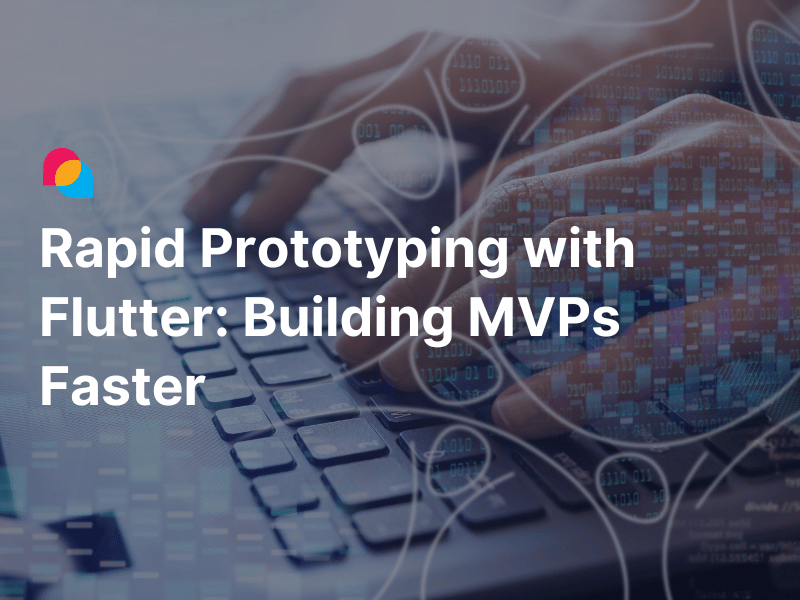In the unpredictable world of startups, building the right product quickly; and learning even faster; is the difference between growth and burnout. That’s where an MVP roadmap becomes your north star. When paired with Agile practices, it helps you validate ideas fast, adapt to feedback, and allocate your resources wisely. This guide walks you through how to create a lean, adaptive MVP roadmap tailored for early-stage startups.
Understanding the MVP Roadmap: A Startup’s Strategic Compass
An MVP (Minimum Viable Product) roadmap is a living document that outlines the development journey of your earliest product version. Unlike a traditional product roadmap that focuses on long-term planning, an MVP roadmap zeroes in on delivering core functionality that solves a specific user problem; fast.
Aligned with Agile values like adaptability, customer collaboration, and iterative progress, the MVP roadmap helps teams avoid over-engineering. Instead of chasing a “perfect” product, it promotes fast, focused, and feedback-driven development.
Why Agile and MVP Are a Perfect Match for Startups
Agile and MVP principles share a fundamental belief: build fast, test often, learn always.
Agile’s iterative framework lets you break large, uncertain goals into manageable increments called sprints. This supports continuous learning and improvement, which is critical when your business model and user expectations are still in flux. Meanwhile, the MVP approach ensures you aren’t burning time and capital on features users don’t want.
Startups that combine Agile and MVP frameworks can pivot swiftly. They embrace validated learning through techniques like customer interviews, A/B testing, and usage analytics. A 2023 study from CB Insights revealed that 35% of startups fail because there's no market need; highlighting why iterative validation is essential.
|
Agile Principle |
MVP Advantage |
|
Responding to change |
Prioritize user feedback in real-time |
|
Working software |
Ship usable, testable versions quickly |
|
Customer collaboration |
Build features that reflect real needs |
|
Deliver frequently |
Shorten the loop from idea to iteration |
Define Success: Metrics That Shape Your MVP Roadmap
Your MVP isn’t “done” when it’s built; it’s done when it delivers real-world validation. To stay accountable, define what success looks like before development starts.
Here are a few metrics to track:
|
Metric |
Purpose |
|
Activation rate |
How many users take a key first action |
|
Retention rate |
Are users coming back after initial use? |
|
Engagement rate |
How frequently are users using core features? |
|
Customer feedback |
What qualitative insights are you hearing? |
|
Time to first value |
How long does it take to deliver real value? |
Also, define a clear Definition of Done for your MVP. It might look like:
- 80% of beta testers complete onboarding
- MVP used at least 3 times by 50+ users in the first month
- At least 10 user interviews confirm problem-solution fit
Without these benchmarks, your roadmap risks becoming a moving target.
Prioritize Ruthlessly: Feature Selection That Serves the Goal
Not all features are created equal; especially in your MVP.
Use prioritization frameworks to avoid building "nice-to-have" features that distract from your core value. Three popular methods include:
- Must-Have
- Should-Have
- Could-Have
- Won’t-Have (yet)
- Reach: How many users benefit?
- Impact: How strong is the effect?
- Confidence: How sure are you?
- Effort: What’s the development cost?
- Categorizes features into basic needs, performance features, and delighters.
Here’s an example using MoSCoW for a time-tracking MVP:
|
Feature |
Category |
|
Start/stop timer functionality |
Must-Have |
|
Export to CSV |
Should-Have |
|
Dark mode |
Could-Have |
|
Invoicing system |
Won’t-Have |
Keep version 1.0 lean. Every feature you delay now gives you more room for learning later.
Build Agile Personas and Use Cases to Guide Roadmapping
Agile personas aren’t lengthy demographic reports; they’re quick, focused profiles that define your early adopters’ goals, frustrations, and workflows. Thanks to tools like ChatGPT, you can create AI-assisted personas in minutes based on real interview data.
Here’s a sample:
Persona: Olivia, 32, Freelance UX Designer
- Goal: Spend less time tracking hours, more time designing
- Pain Point: Manual time logs often forgotten
- Trigger: Needs better tracking before monthly invoicing
Once you have this persona, map core use cases that align with real-world behaviors:
|
Use Case |
User Intent |
|
Start timer from browser |
Olivia wants to log hours without distraction |
|
View weekly summary |
Olivia checks time balance before invoicing |
|
Tag projects by client |
Olivia separates work by client for reports |
Break Down the MVP Roadmap into Agile Epics and Stories
Once your personas and use cases are clear, the next step is to break them into epics and user stories; the building blocks of your MVP backlog.
- Epics are large feature clusters that describe major functions (e.g., "User Time Tracking").
- User stories break those epics into smaller, actionable items using the format:
As a [user], I want to [action] so that I can [goal].
Here’s how that might look for our freelance time-tracking MVP:
|
Epic |
User Story |
Acceptance Criteria |
|
Timer Functionality |
As a user, I want to start/stop a timer |
Timer starts and stops with one click |
|
Reporting |
As a user, I want to see my weekly logged hours |
Shows total hours grouped by day |
|
Project Tagging |
As a user, I want to tag time logs by project or client |
Tags are applied and filterable |
These stories are then estimated using Agile techniques (like story points or t-shirt sizing) and placed into sprints based on team velocity.
Sprint Planning: Mapping Features to Time and Resources
Agile sprint planning ensures you deliver MVP features incrementally and predictably, based on team bandwidth.
Estimating Sprint Timeline:
- Use historical team velocity if available.
- Start with 2-week sprints for most early-stage teams.
- Allocate time for QA, testing, and documentation in each sprint.
For example, if your team can deliver 10 story points per sprint, and your MVP requires 40 story points, you’ll need at least 4 sprints (~8 weeks) to launch.
|
Sprint |
Key Stories |
Notes |
|
1 |
Timer Start/Stop, Manual Entry |
Basic functionality |
|
2 |
Weekly Summary, User Onboarding |
Analytics + UX |
|
3 |
Tagging by Project, Export Logs |
Added value features |
|
4 |
Bug Fixing, UI Polish, Beta Testing |
MVP readiness check |
Also, balance development with design, testing, and stakeholder reviews to prevent overload or missed goals.
Leverage Feedback Loops: Build, Measure, Learn
Your MVP is not a final product; it’s an engine for learning. That’s why feedback loops are crucial to your roadmap.
Eric Ries’ Build-Measure-Learn loop remains a foundational practice:
- Build the smallest feature set to test your core assumption.
- Measure actual user behavior with analytics, surveys, or interviews.
- Learn whether to pivot, persevere, or expand.
Set checkpoints in your roadmap to gather and analyze feedback regularly:
|
Feedback Type |
Collection Method |
When to Use |
|
Quantitative |
Post-launch metrics |
|
|
Qualitative |
1-on-1 interviews, open-ended surveys |
Beta user feedback |
|
Behavioral |
Session replays, heatmaps |
UX or onboarding optimization |
Example insight: If users start the timer but rarely check reports, you might prioritize simplifying the analytics dashboard in your next sprint.
Tools and Templates to Operationalize Your MVP Roadmap
Managing your MVP roadmap doesn’t have to be chaotic. The right tools can help visualize priorities, track progress, and maintain team alignment.
Recommended Tools:
|
Tool |
Use Case |
|
Story management, sprint planning |
|
|
Simple kanban-style roadmap views |
|
|
Docs, wikis, roadmap visualization |
|
|
Persona mapping, journey maps, brainstorming |
Evolving the MVP Roadmap Post-Launch
The MVP launch is not the finish line; it’s just the first checkpoint on your startup journey. Once you’ve gathered data, it’s time to evolve your roadmap toward product-market fit.
What’s Next:
- Run a retrospective with your team to assess what worked.
- Map feedback into new epics: onboarding improvements, UI upgrades, or new integrations.
- Define your North Star Metric (e.g., weekly active users, conversion rate).
Start building a growth roadmap, fueled by real-world data. This could include:
- A/B testing product features
- Scaling your tech stack
- Expanding to new customer segments
By iterating on your MVP roadmap, you turn a scrappy prototype into a scalable product.
Final Thoughts: Stay Lean, Learn Fast, Scale Wisely
Creating an Agile MVP roadmap isn’t just a technical exercise; it’s a strategic mindset. It requires ruthless prioritization, fast learning cycles, and a deep commitment to solving real problems for real users. For early-stage startups, this roadmap is your clearest path to market validation, sustainable growth, and product-market fit.
By embracing Agile frameworks, user feedback, and smart tools, you’ll transform your idea into a value-driven product; faster and with fewer risks.
Reference:
Developing an MVP in Less Than 4 Weeks with Flutter, netguru, 2025
Mvp Development Using Flutter, Irjmets Research, 2025
How Flutter Can Accelerate Your MVP Development, Technaureus, 2024





